BMW 3 Series Saloon vs Hyundai IONIQ 6 – Which model is better for everyday use?
Compare performance, boot capacity, efficiency and price at a glance.
Find out which car is the better choice for you – BMW 3 Series Saloon or Hyundai IONIQ 6?
Costs and Efficiency:
When it comes to price and running costs, the biggest differences usually appear. This is often where you see which car fits your budget better in the long run.
Hyundai IONIQ 6 has a hardly perceptible advantage in terms of price – it starts at 37600 £, while the BMW 3 Series Saloon costs 39900 £. That’s a price difference of around 2314 £.
As for range, the Hyundai IONIQ 6 performs significantly better – achieving up to 614 km, about 513 km more than the BMW 3 Series Saloon.
Engine and Performance:
Under the bonnet, it becomes clear which model is tuned for sportiness and which one takes the lead when you hit the accelerator.
When it comes to engine power, the Hyundai IONIQ 6 has a to a small extent edge – offering 650 HP compared to 530 HP. That’s roughly 120 HP more horsepower.
In acceleration from 0 to 100 km/h, the Hyundai IONIQ 6 is barely noticeable quicker – completing the sprint in 3.20 s, while the BMW 3 Series Saloon takes 3.50 s. That’s about 0.30 s faster.
In terms of top speed, the Hyundai IONIQ 6 performs barely noticeable better – reaching 257 km/h, while the BMW 3 Series Saloon tops out at 250 km/h. The difference is around 7 km/h.
There’s also a difference in torque: Hyundai IONIQ 6 pulls barely noticeable stronger with 770 Nm compared to 700 Nm. That’s about 70 Nm difference.
Space and Everyday Use:
Cabin size, boot volume and payload all play a role in everyday practicality. Here, comfort and flexibility make the difference.
Both vehicles offer seating for 5 people.
In curb weight, BMW 3 Series Saloon is somewhat lighter – 1575 kg compared to 1850 kg. The difference is around 275 kg.
In terms of boot space, the BMW 3 Series Saloon offers slightly more room – 480 L compared to 401 L. That’s a difference of about 79 L.
When it comes to payload, BMW 3 Series Saloon to a small extent takes the win – 495 kg compared to 430 kg. That’s a difference of about 65 kg.
Who comes out on top?
Overall, the Hyundai IONIQ 6 shows itself to be wins the duel decisively and secures the title of DriveDuel Champion.
It convinces with the more balanced overall package and proves to be the more versatile choice for everyday use.
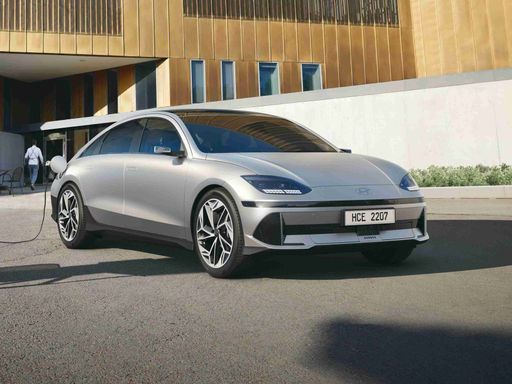
Hyundai IONIQ 6
BMW 3 Series Saloon
The BMW 3 Series Saloon seamlessly blends elegance with sporty performance, offering a driving experience that's both dynamic and refined. Its meticulously crafted interior and intuitive technology create a comfortable and connected environment for both driver and passengers. On the road, the 3 Series delivers agile handling and a smooth ride, making it a standout choice in its class.
details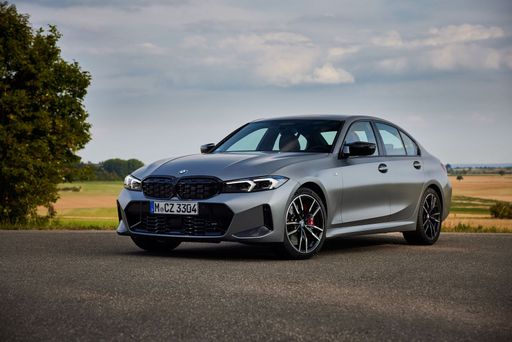 @ press.bmwgroup.com
@ press.bmwgroup.com
 @ press.bmwgroup.com
@ press.bmwgroup.com
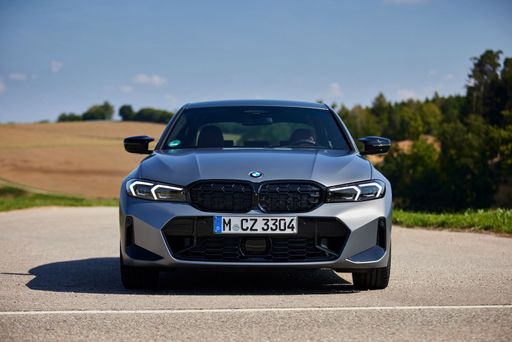 @ press.bmwgroup.com
@ press.bmwgroup.com
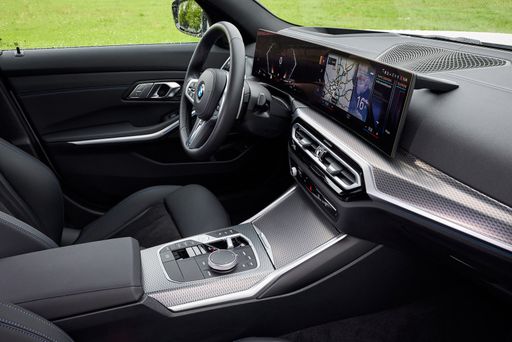 @ press.bmwgroup.com
@ press.bmwgroup.com
 @ press.bmwgroup.com
@ press.bmwgroup.com
Hyundai IONIQ 6
The Hyundai IONIQ 6 merges futuristic design with eco-friendly technology, offering a glimpse into the future of electric mobility. Its sleek silhouette and aerodynamic profile are sure to capture attention on the road, while the interior provides a seamless blend of comfort and cutting-edge digital features. With a focus on efficiency and sustainability, this model represents a significant step forward in the evolution of electric vehicles.
details @ hyundai.news
@ hyundai.news
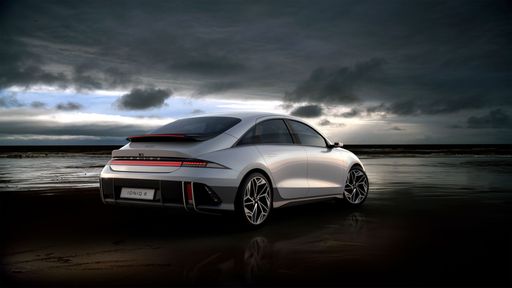 @ hyundai.news
@ hyundai.news
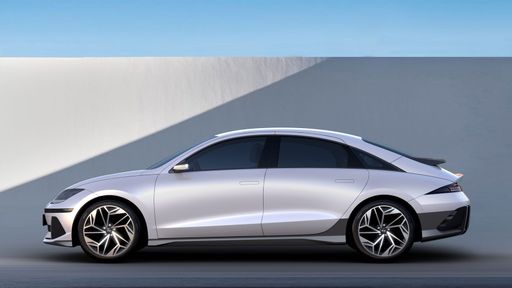 @ hyundai.news
@ hyundai.news
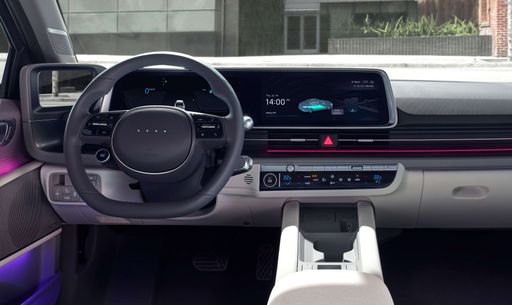 @ hyundai.news
@ hyundai.news

|

|
|
|
|
Costs and Consumption |
|
|---|---|
|
Price
39900 - 91000 £
|
Price
37600 - 64300 £
|
|
Consumption L/100km
0.8 - 10.1 L
|
Consumption L/100km
-
|
|
Consumption kWh/100km
-
|
Consumption kWh/100km
13.9 - 15.1 kWh
|
|
Electric Range
96 - 101 km
|
Electric Range
429 - 614 km
|
|
Battery Capacity
19.50 kWh
|
Battery Capacity
53 - 84 kWh
|
|
co2
19 - 227 g/km
|
co2
0 g/km
|
|
Fuel tank capacity
40 - 59 L
|
Fuel tank capacity
-
|
Dimensions and Body |
|
|---|---|
|
Body Type
Sedan
|
Body Type
Hatchback
|
|
Seats
5
|
Seats
5
|
|
Doors
4
|
Doors
4
|
|
Curb weight
1575 - 1960 kg
|
Curb weight
1850 - 2095 kg
|
|
Trunk capacity
375 - 480 L
|
Trunk capacity
401 L
|
|
Length
4713 - 4801 mm
|
Length
4855 - 4935 mm
|
|
Width
1827 - 1903 mm
|
Width
1880 - 1940 mm
|
|
Height
1437 - 1446 mm
|
Height
1495 mm
|
|
Max trunk capacity
-
|
Max trunk capacity
-
|
|
Payload
405 - 495 kg
|
Payload
425 - 430 kg
|
Engine and Performance |
|
|---|---|
|
Engine Type
Diesel MHEV, Plugin Hybrid, Petrol, Petrol MHEV
|
Engine Type
Electric
|
|
Transmission
Automatic, Manuel
|
Transmission
Automatic
|
|
Transmission Detail
Automatic Gearbox, Manual Gearbox
|
Transmission Detail
Reduction Gearbox
|
|
Drive Type
Rear-Wheel Drive, All-Wheel Drive
|
Drive Type
Rear-Wheel Drive, All-Wheel Drive
|
|
Power HP
150 - 530 HP
|
Power HP
151 - 650 HP
|
|
Acceleration 0-100km/h
3.5 - 8.6 s
|
Acceleration 0-100km/h
3.2 - 8.8 s
|
|
Max Speed
218 - 250 km/h
|
Max Speed
185 - 257 km/h
|
|
Torque
250 - 700 Nm
|
Torque
350 - 770 Nm
|
|
Number of Cylinders
4 - 6
|
Number of Cylinders
-
|
|
Power kW
110 - 390 kW
|
Power kW
111 - 478 kW
|
|
Engine capacity
1995 - 2998 cm3
|
Engine capacity
-
|
General |
|
|---|---|
|
Model Year
2024 - 2025
|
Model Year
2022 - 2025
|
|
CO2 Efficiency Class
D, E, B, F, G
|
CO2 Efficiency Class
A
|
|
Brand
BMW
|
Brand
Hyundai
|
What drive types are available for the BMW 3 Series Saloon?
The BMW 3 Series Saloon is offered with Rear-Wheel Drive or All-Wheel Drive.
The prices and data displayed are estimates based on German list prices and may vary by country. This information is not legally binding.
